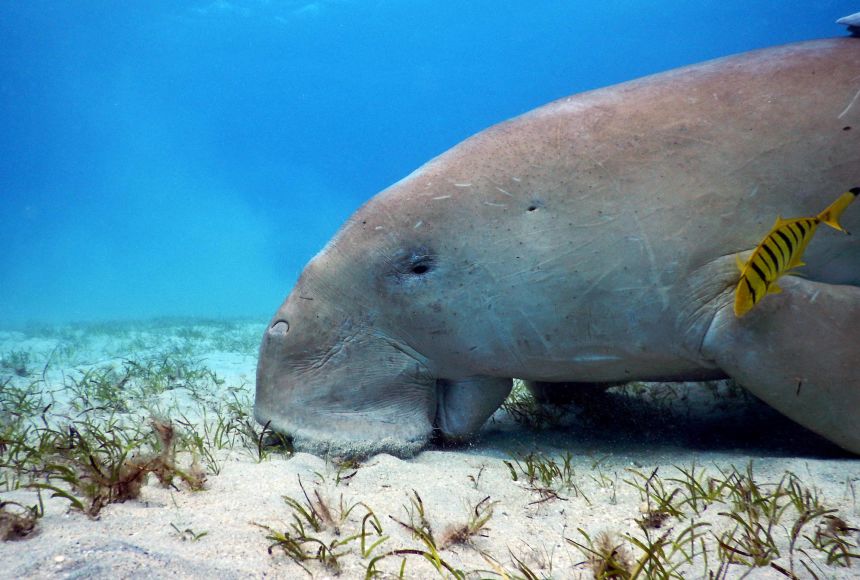Scientists have identified around 300,000 different marine species. Together, these make up about 15 percent of all known species on the planet. However, the sea is so vast that a million or more as yet unknown species might live in its waters. Most of these marine species are tied together through the food web.
Level One: Photoautotrophs
The foundation of the sea's food chain is largely invisible. Countless billions of one-celled organisms, called phytoplankton, fill sunlit upper-ocean waters worldwide. They are microscopic, meaning they are too small to be seen by human eyes. These tiny organisms work similarly to plants in some ways. Like plants, they take in the sun's energy and, through photosynthesis, convert nutrients and carbon dioxide into organic compounds. On the coast, seaweed and seagrasses do the same thing.
Together, these humble plants play a large role: They are the primary producers of the organic carbon that all animals in the ocean food web need to survive. They also produce more than half of the oxygen that we breathe on Earth.
Level Two: Herbivores
The next level of the marine food chain is made up of plant-eaters, or herbivores. Many of these herbivores are microscopic animals that drift on the ocean's surface, grazing on whatever they come across. These creatures are known as zooplankton. They include a microscopic form of jellyfish and the larval stages of some fish, barnacles, and mollusks. Larger herbivores include surgeonfish, parrotfish, green turtles, and manatees.
Despite their differences in size, herbivores share a boundless appetite for ocean vegetation. Many of them also share the same fate: They become food for the carnivorous, or flesh-eating, animals of the food chain's top two levels.
Level Three: Carnivores
The zooplankton of level two provides food for a large and varied group of small carnivores, such as sardines, herring, and menhaden. This level of the food chain also includes larger animals, such as octopuses, and many kinds of fish. The octopuses feed on crabs and lobsters, while the fish feed on small invertebrates that live near the shore. Though these small carnivores are very successful hunters, they often fall prey to a simple fact of ocean life: Big fish eat smaller fish.
Level Four: Top Predators
The large predators that sit at the top, or apex, of the marine food chain are a varied group. They include finned animals, such as sharks, tuna, and dolphins; feathered animals, like pelicans and penguins; and flippered ones, like seals and walruses. These apex predators tend to be large, fast, and very good at catching prey. They are also long-lived and usually reproduce slowly. Compared with smaller animals, females have fewer offspring and do not give birth that often.
However, the marine food chain's top predators are common prey for the most deadly hunters of all: humans. When populations of top predator species shrink due to overfishing, it can take years for them to recover. This is due to their slow rate of reproduction. The loss of these species can create problems throughout the entire food web. For example, populations of smaller animals they normally feed on can become too large and hurt the balance of resources available to other animals.
Alternative Food Chains
The primary marine food web, which is based on plant productivity, includes many of the sea's species—but not all of them. There are other deep-ocean ecosystems that are entirely independent of the sunlight energy that kick-starts the main marine ecosystem. At their roots, these unique ecosystems are fueled by chemical energy that enters the ocean from sources like hydrothermal vents. Hydrothermal vents are openings in the ocean floor that release heated minerals from deep within Earth, into the ocean's waters.

